Culture
Navratri Notes: Asherah, The Hebrew Goddess And The Tree Of Life
Aravindan Neelakandan
Oct 09, 2024, 11:16 PM | Updated 11:16 PM IST
Save & read from anywhere!
Bookmark stories for easy access on any device or the Swarajya app.
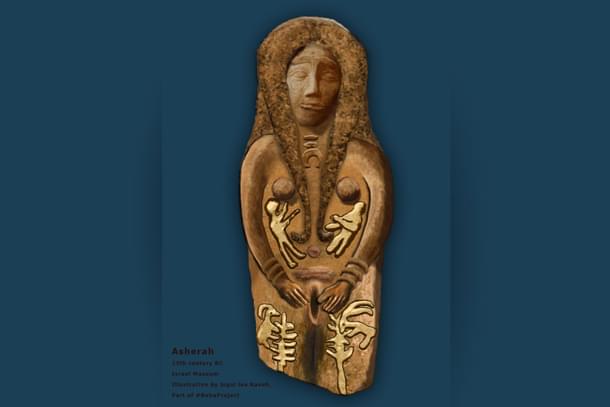
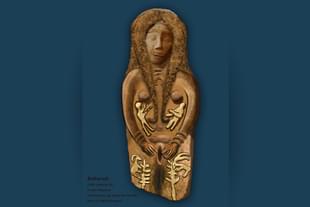
She was the indwelling Light. She was the Cosmic Tree and the Tree of Life. She was the Serpent of Wisdom. She was the Goddess of the right path; Amidst the tumultuous waves of the dark, She was the Goddess of the ocean. She was the divine sanctuary and the sacred groove.
She was also cursed as an abomination and a corruption. Her worship would be specially shamed and condemned.
She was Asherah.
This is the story of Her greatness, exile and return.
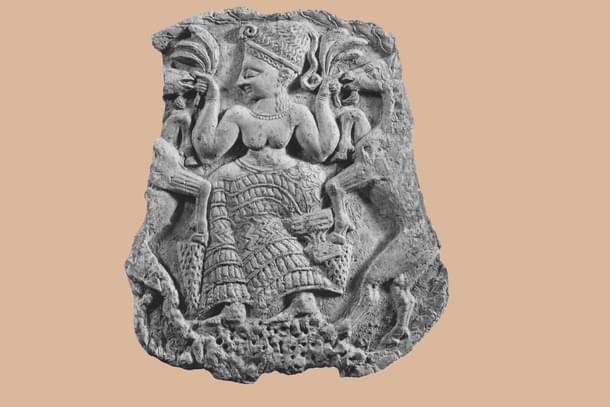
For many non-Jews, the study of Judaism has often been filtered through a Christian lens and is the Judaic tradition is perceived as a strict, text-defined, dogmatic monotheism.
In reality, Judaism is not a monolithic, text-bound tradition. It has long been a composite mingling of mythology, mysticism, and folk traditions from diverse streams. Although sacred texts form the core of Jewish religious life, they do not encapsulate all its dimensions.
Ancient Israelite religion, like many cultures transitioning from the Bronze Age to the Iron Age, was complex, and archaeological evidence suggests the influence of Goddess traditions, particularly that of Asherah.
Mentioned 40 times in Bible, depending on the context Asherah could refer to a cult object – mostly a wood, wooden pole or even a tree and also the Goddess. According to Bible, She was a Canaanite corruption that entered the Israelite religion.
The truth is more complex.
When the Israelites entered Canaan, the Bible describes their encounters with the Canaanites as violent and conquest-driven. However, archaeology paints a slightly different picture. Rather than a sharp division marked by large-scale battles, it suggests a gradual, syncretic interaction between the Canaanites and the Israelites.
Cultural and religious practices from both groups seem to have blended over time, with some archaeologists even suggesting early Israelites likely emerging from within Canaanite society itself.
This archaeological record blurs the lines between these two groups, complicating the notion of distinct, opposing peoples.
The Israelites adapted El, originally the chief god of the Canaanite pantheon, to represent Yahweh as their singular, supreme deity. Naturally Asherah, who was already the Goddess consort of El, became the consort of Yahweh in popular worship.
At the same time the Goddess cult influences from the Mosaic tradition also merged into this Goddess worship.
According to archaeologist-historian William Dewar, the etymology of the Hebrew word Asherah while ‘unclear... may derive from a verb meaning ‘to tread, go straight.’’ Early Canaanite or Ugarit texts also call Her the 'Lady of the sea' and the 'One who subdues the sea.'
In the Bible, one reads that the king Hezekiah (8th century BCE) removed a bronze serpent image, Nehushtan, from the temple of Jerusalem.
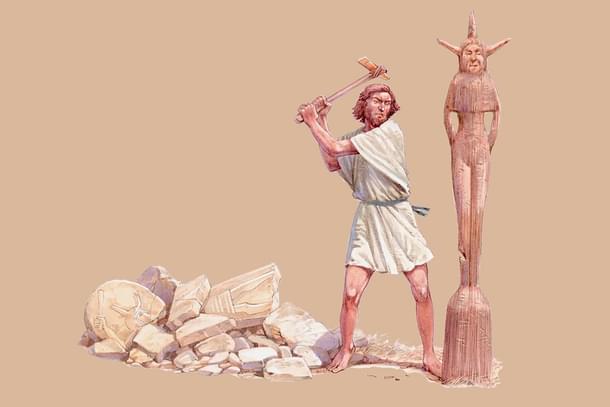
Saul M Olyan, a historian of Biblical religion points out that even though Deuteronomic reforms approved of the removal, they could not diminish the respectability of the image as they acknowledged that it had a connection with Moses. This related to Asherah. Pointing out that in Bronze age one of the epithets of Asherah meant Her as ‘one of the Serpents’ , he writes:
One suspects that that an early myth associating the serpent/sea dragon and Asherah has been lost. Perhaps a reflex of this myth is preserved in the Eden story in Genesis. After all, hawwa (Eve) is an attested epithet of Tannit/Asherah in the first millennium BCE.... The cumulative evidence associating the serpent, and the goddess Asherah suggests in our view that the bronze serpent Nehushtan of the Jerusalem temple may have been an Asherah cult symbol, and was therefore removed by Hezekiah along with the asherah itself. The symbol had been perfectly legitimate up to that time. It even had a prestigious pedigree.... In any case, the bronze serpent, the asherah, and the pillar were opposed by the deuteronomistic school, though they were apparently legitimate outside such circles.‘Asherah and the cult of Yahweh in Israel’ (1988) , pp.70-71
But what was the status of Asherah outside the textual religion and in the more realistic folk religion of Israelites? It was the same relation that She had with Canaanite El. She was the wife.
In 1969 in an excavation site of what could be identified with biblical Makkedah, from one of the excavated tombs William Dewar discovered a four-line Hebrew inscription which read that the person who was a governor was blessed by Yahweh and saved from his enemies by ‘his Asherah.’
The inscription also shows a hand which Dewar tentatively links to the later ‘Hand of Hamsa’ symbol - a divine feminine symbol common to Judaism and Islam.
Another important archaeological evidence comes from Kuntillet Ajrud, which was also an 8th century BCE site – often considered as a shrine. In many of the inscriptions here, the names Yahweh and Asherah were clearly paired: ‘Yahweh of Teiman and his Asherah’ and ‘Yahweh and his Asherah’. In the excavation two inscribed jars were obtained.
One of them named Pithos A contains a curious depiction – a stylized tree with a lotus like flower at its top, flanked on either side by an ibex each. There is a lion at the bottom. It seems to integrate many symbols – the Goddess, the tree of life and perhaps a stylised proto-menorah.
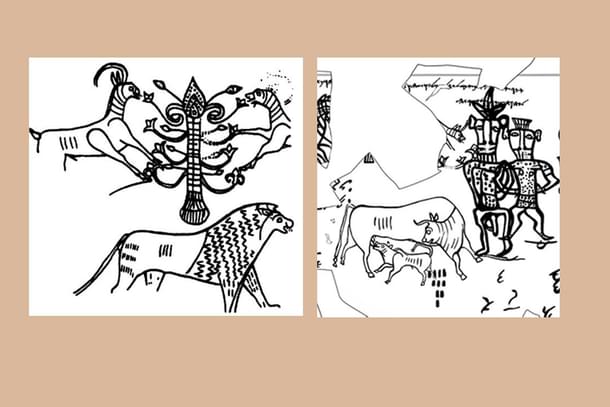
Then there is also another depiction – the cow licking a calf drinking its milk. Yahweh was the bull and Asherah the cow.
In an excavated shrine (called 'Arad temple') there are two symbolic stones, possibly one to Yahweh and another to Asherath.
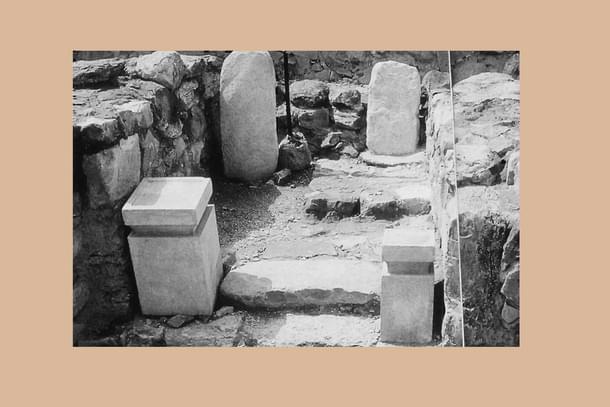
Later, suffering various invasions, imperial persecutions and national tragedies, Israelites were becoming a nation under siege.
Probably, the Yahweh-centric prophetic zeal gave rise to a form of puritanism—a spiritual and national defense mechanism. Unfortunately, this also led to the purging of the Goddess. Referring to the archaeological evidence of widespread Goddess worship as the 'unwritten Bible' of the Israelites, William Dever, in a poignant conclusion, states:
The biblical language about God speaks about the deity in terms of predominantly male attributes simply because it was men who wrote the Bible. I have argued above that if women had written their own Bible, God would have appeared very differently — and perhaps more humanely. That is not reverse sexism, but simply the recognition of biological facts.... The rediscovery of the Goddess and of women's popular cults in ancient Israel redresses the balance. It helps to correct the androcentric bias of the biblical writers. It "fleshes out" that concept of God, brings the divine mystery closer to the heart of human experience, and yes, to the mystery of human sexual love.Did God Have a Wife: Archaeology and Folk Religions in Ancient Israel, 2005, pp.310-11
The archaeological discovery of the Goddess is only half of the story. There is also the more important archetypal presence.
Asherah is also the Tree. She was the serpent. The images coalesce and resurface in later Kabbalistic mysticism. She becomes Shekinah. The Jewish mythological layer identifies Her as the consort of Yahweh and She is always in the Temple of Jerusalem.
Poet and expert in Jewish mythology, Howard Schwartz, in his excellent book compiling Jewish mythologies along with Kabbalistic interpretations, highlights that the role of the Shekinah, which emerges in the Kabbalistic era, can be seen as a resurrection of the suppressed goddess Asherah from ancient Jewish tradition.
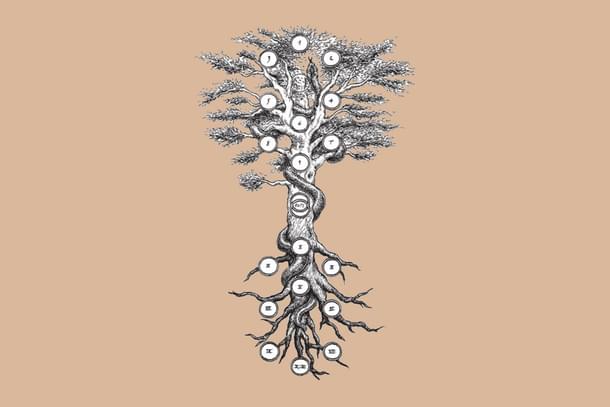
He then speaks of the Jewish mythology surrounding the Temple of Solomon in Jerusalem, viewing it not only as the abode of God but as the site of His union with the Goddess—every night.
As long as the Temple stood, it served as the sacred bedchamber of God the King and His Bride, the Shekinah. Every midnight She would enter through the place of the Holy of Holies, and She and God would celebrate their joyous union. The loving embrace of the King and His Queen assured the well-being not only of Israel, but also of the whole world.... He made His home with Her and took His delight between Her breasts. They lay in a tight embrace, Her image impressed on His body like a seal imprinted upon a page, as it is written, ‘Set me as a seal upon Your heart’ (Song of Songs) ... Zohar expands on this: “The Matronita (the Shekhinah) united herself with the king. From this, one body resulted.”Tree of Souls : The Mythology of Judaism, p.55
All the important symbols associated with the later monotheistic religions have emerged from the Goddess cults.
Consider the cross, Christianity's most revered symbol—it might have come from the ancient Asherah pole. Even the synoptic Jesus myths compare Jesus on the cross to the serpent on a pole, both symbols of Asherah.
Adding to the mystery is the folk belief that the cross was made from Moses' staff, which came from the Tree of Life in Eden. Seen through a broader mythological lens, the suppressed Goddess tradition in Christian myth becomes visible.
Had the Divine Feminine, instead of getting suppressed in this family of religions, been allowed to flourish, perhaps we would not be witnessing the destructive wars that we are witnessing today.
As Asherah gets rehabilitated after more than two thousand years, it reveals a unique feature of Hinduism. It is the harmonious integration of folk and book-based traditions through constant organic interaction.
Practices like the sthala puranas blend local folk traditions into scriptural ones, and customs, such as the kolu incorporate deities from diverse streams. We take for granted this great civilisational merit. But this is a blessing that the warring world religions urgently need.
Also read:
1. Navratri notes: Nammu, the forgotten Serpent-Sea Goddess from Sumeria
2. Navratri notes: Inanna, the Goddess of Life and War
3. Navratri notes: Maat, the Goddess of Cosmic Order, Breath of Life, and Justice
4. Navratri notes: Artemis, The Goddess of Wild Life and Child Birth
5. Navratri notes: She flows like Ganga, Saraswati, and also like Oshun of the Yorubas of Africa
6. Navratri notes: Gaia—Ancient Mother Earth reawakens in science




